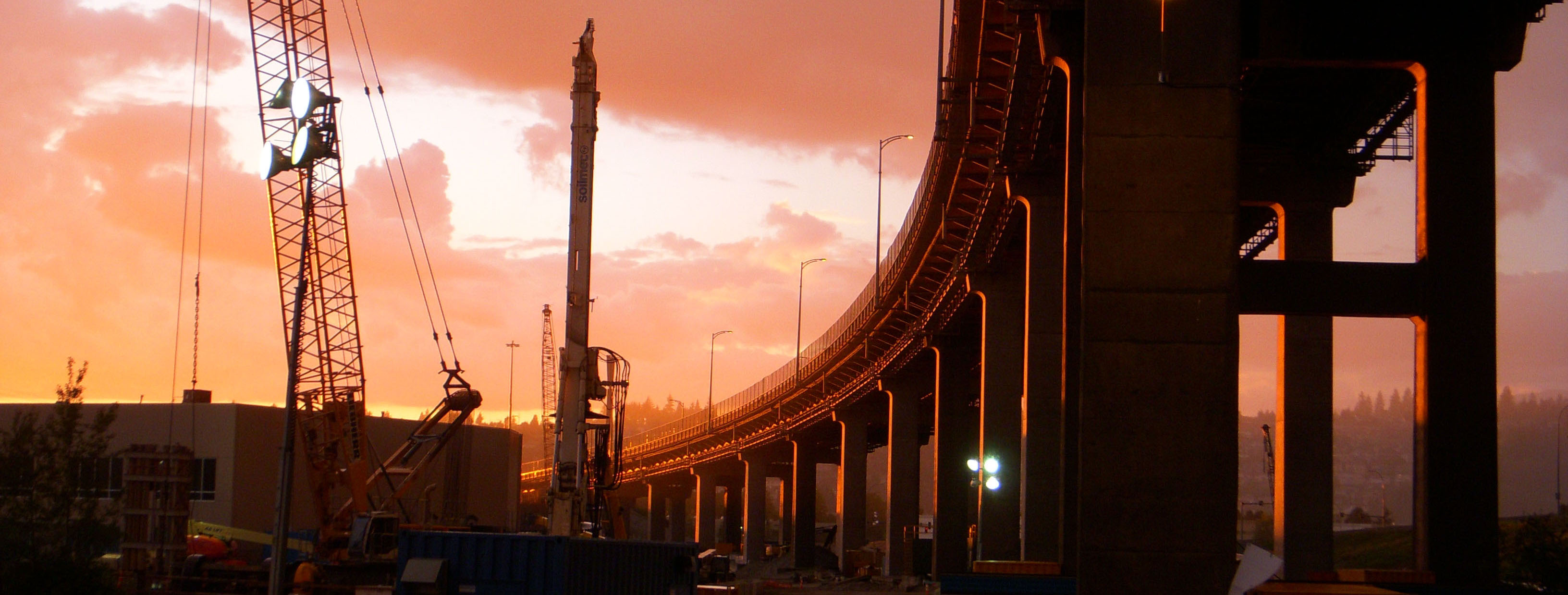Project Summary
Bridges and other structures shake during earthquakes because they are connected to the ground via their foundations. This may sound obvious, but it is a fact that we don't account for very well when specifying design ground motions per the current state of practice. That's because ground motions for structural analyses usually correspond to a free-field ground condition. For example, the PEER ground motions database contains only free-field recordings that are not altered by soil-structure interaction effects. Shaking the base of a structural model with a ground motion that corresponds to a free-field condition ignores the fact the foundation alters the incoming ground motion because of its inherent stiffness and ground motion incoherence. While these concepts are recognized and have been fairly well-researched for shallow foundations, the influence of kinematic soil-structure interaction (KSSI) for deep foundations is poorly understood.
The goal of this project is to develop simple tools that can be used by practicing engineers to modify free-field ground motions (FFM) so that they correspond to an appropriate top-of-foundation or "foundation-input motion" (FIM) condition. For critical projects like signature bridges and tall buildings that will be structurally analyzed using the dynamic "response history" method, the modification consists of a transfer function applied to the FFM in the frequency domain. For more routine projects designed using a response spectrum, the modification consists of multiplying the spectral acceleration ordinate corresponding to a FFM by a factor to convert it to an appropriate FIM spectral acceleration. The foundation designer will select the appropriate transfer function or ratio-of-response-spectra factors based on readily-quantifiable parameters that describe the soil and foundation at their site, such as soil shear wave velocity (Vs) and foundation flexural rigidity (EI). We expect that sites with a large stiffness contrast between the soil and the foundation, such as a soft clay site with large diameter drilled shafts, will experience a large reduction in the FIM relative to the FFM over the frequency range of engineering interest.
Our approach to quantifying the FIM/FFM transfer functions is to perform a suite of numerical studies that capture a variety of soil and foundation conditions, then statistically characterize the results and relate them back to parameters like Vs and EI. The analysis is depicted below:

We begin with a ground motion corresponding to a bedrock condition, propagate that motion through a 1-D site response model in DEEPSOIL, and apply the displacement history at each level of the soil profile to the free end of soil springs connected to a model of the pile in OpenSees. We then use the displacement history at the top of the foundation (FIM) relative to the FFM to compute the transfer function. We will repeat this procedure using 40 ground motions, at least six different soil profiles, and several foundation sizes corresponding to thousands of individual analyses. Thank goodness for modern computing power!
To check the validity of our numerical simulations, we're making comparisons to analytical solutions and full-scale field test measurements. Click the links for more information and check back for updates.


